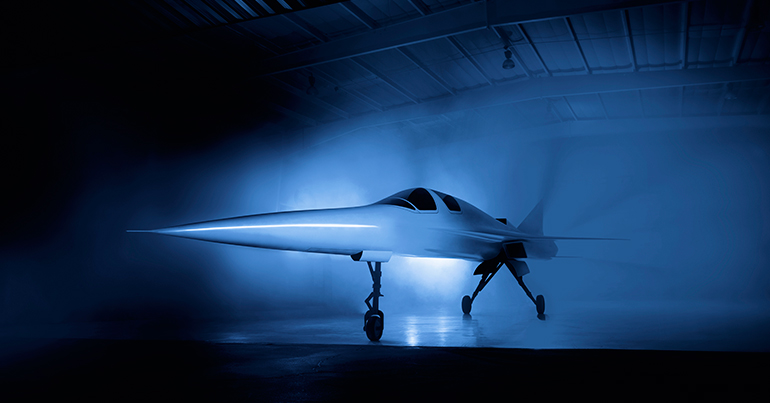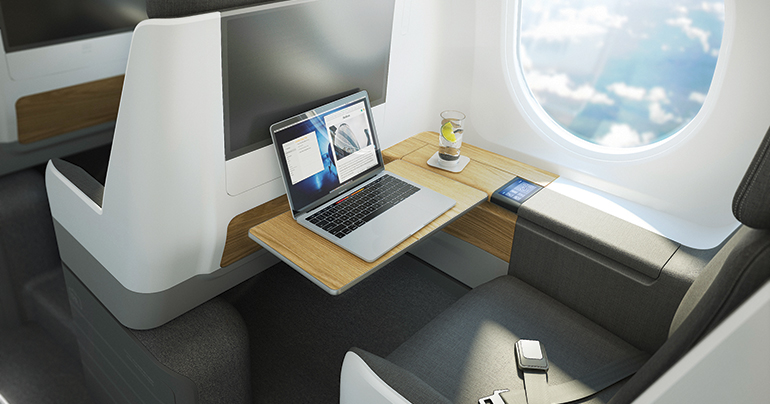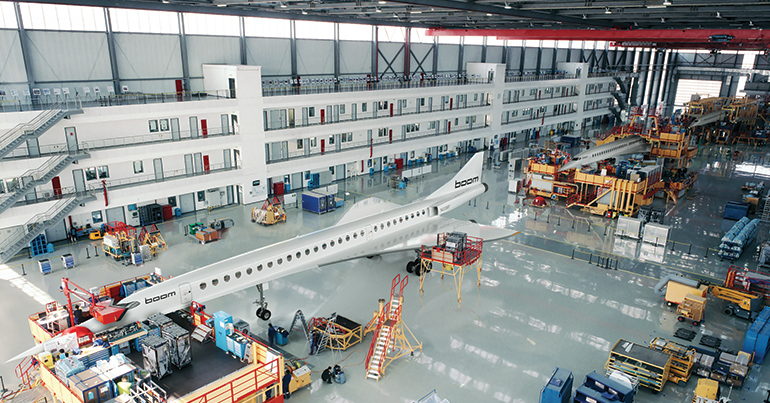Fifteen years after the end of the Concorde, a new supersonic jet is under construction. Can a startup avoid the flaws of its predecessor to make the plan the preferred conveyance of the Southeast Asian jet set

Everything is moving faster and faster in this hectic world, with one exception: jet planes.
When the Boeing 707 entered service 60 years ago, it thundered through the air at almost 1,000 kilometres per hour. Her great-granddaughter, the ultra-modern Boeing 787, can fly only 900 kilometres per hour. Flying in the jet age has become safer, more mass-capable, cheaper, quieter, cleaner. And just amazingly slow.
Is it over, then? Is the dream of ever-increasing cruising speed over? Not quite.
In the inconspicuous Hangar 14 at Centennial Airport in Denver, Colorado, dozens of hopeful engineers of the startup Boom Technology are toiling in the sound-barrier revolution. Since 2014, Boom has been developing a plane for up to 55 passengers which will race through the stratosphere at 2,335 kilometres per hour and will need a good three hours to get between New York and London, five and a half between San Francisco and Tokyo. For high-flying executives hoping to take full advantage of the Asian century, Boom estimates that flights between Kuala Lumpur and Qatar’s capital of Doha will take just three and a half hours – less than half the journey’s current time. Passengers travelling between Singapore and Beijing will have their travel time halved to just three hours.
Boom founder Blake Scholl wants to reinvent supersonic flying with a craft that aims to be cheaper for passengers, more profitable for airlines and more environmentally friendly. A round-trip ticket between New York and London might cost around $5,000, the cost of a business class ticket today.

Scholl, a hobby pilot and former Amazon manager, has gathered experts who previously worked for Boeing, Airbus, Lockheed, Nasa, SpaceX and Gulfstream. As of this writing, he has raised more than $50 million in venture capital, and the first customers are on the waiting list: British entrepreneur Richard Branson of Virgin Galactic has options on ten Booms, and Japan Airlines wants 20 of them. Five other airlines have expressed interest in buying more than 70 aircrafts each.
The team is currently building a Baby Boom, aka the XB-1. It’s a third of the size of the full model and will serve as a test platform. The XB-1’s first flight is scheduled for this year as Boom urgently searches for a chief test pilot. In the coming months, Scholl wants to determine a location for series production. If Boom enters scheduled service in 2023 as planned, it would make the world smaller than any commercial aircraft before it.
Others are also working on the idea of more speed above the clouds. Together with Lockheed Martin, Nasa is developing a supersonic aircraft that no longer generates a supersonic bang and could therefore also be used over inhabited areas. Lockheed is also working with Aerion of Nevada on the construction of a supersonic business jet with up to 12 seats, scheduled for completion in 2025.
Will Boeing and Airbus fall out of favour? Do airlines have to watch their premium customers desert to Branson and the other Boom adopters on a massive scale?
Not likely. Nothing can escape the laws of flight physics.

When an aircraft approaches the speed of sound, its air resistance increases dramatically, so its fuselage has to be pointed and narrow, making it rather uncomfortable for passengers. The engines have to deliver considerably more thrust in the fight against air resistance, which multiplies their fuel consumption and inevitably leads to high ticket prices.
Boom father Scholl believes that he can at least partially solve the problem of air resistance. Unlike the Concorde’s designers, his people have the tech to elegantly optimise the shape of the machine on a computer instead of in endless wind tunnel tests. An aerodynamically mature aircraft, paired with modern engines and light composites instead of aluminium, can achieve favourable fuel consumption values.
[manual_related_posts]
Even if Scholl is right, his Boom will still burn much more kerosene than contemporary Airbus and Boeing aircraft, which are not designed for higher speeds but for optimum economy.
Fuel costs are a decisive factor for airlines. If oil prices rise, the thirsty supersonic aircraft may no longer be profitable. Boom could, then, have a future as a niche product for the most urgent of travellers.
But at least one Asian firm is betting on Boom. Ctrip, a Chinese online travel service provider, has already invested in the startup and the dream of faster-than-sound intercontinental jaunts.
© 2018 Spiegel Online distributed by The New York Times Syndicate
This article was published in the July 2018 edition of Southeast Asia Globe magazine. For full access, subscribe here.

